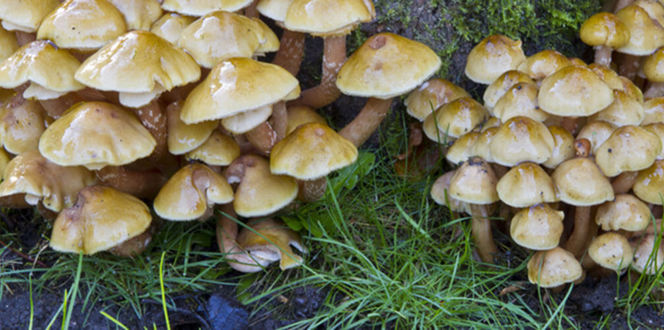Oak Bracket Fungus Description:
Oak bracket is a fibrous, “weeping” fungus that grows at the base of oak trees. The thick fruiting body is called a conk and varies from 2-12cm in width. The surface is a creamy brown color with pitted tubes that secrete an orange/amber liquid when young. The underside is filled with fine pores that are grey/white in color, eventually becoming yellow with age. The conks darken with further age, becoming dark brown or black.
Hosts:
This fungus is found predominantly on the base of oak trees, but is sometimes found on maples, elms and chestnuts.
Biology & Symptoms:
Oak bracket is a parasitic fungus that causes white rot and decay in seemingly healthy trees. Sometimes infected trees will show a general canopy decline. It can be found close to the ground on the trunk as single conks or in clustered groups. The conks appear during summer and fall, but may overwinter or keep coming back year after year. The presence of this fungus indicates that the lower portion of the tree has been weakened.
Oak Bracket Fungus Management:
As a parasitic fungus, Inonotus dryadeus can cause serious damage to landscape trees. Infected trees may be susceptible to falling before symptoms are even noticeable. With no fungicide treatments available to fight this fungus, prevention is imperative. If conks are seen on landscape trees, the trees should be inspected for soundness by your local arborist. If damage is severe, the tree may need to be removed entirely. A healthy tree may be less susceptible to infection, therefore follow cultural practices such as proper fertilization, mulching and pruning techniques to optimize your tree’s health. Consult your local arborist for more tips on keeping your trees healthy.





